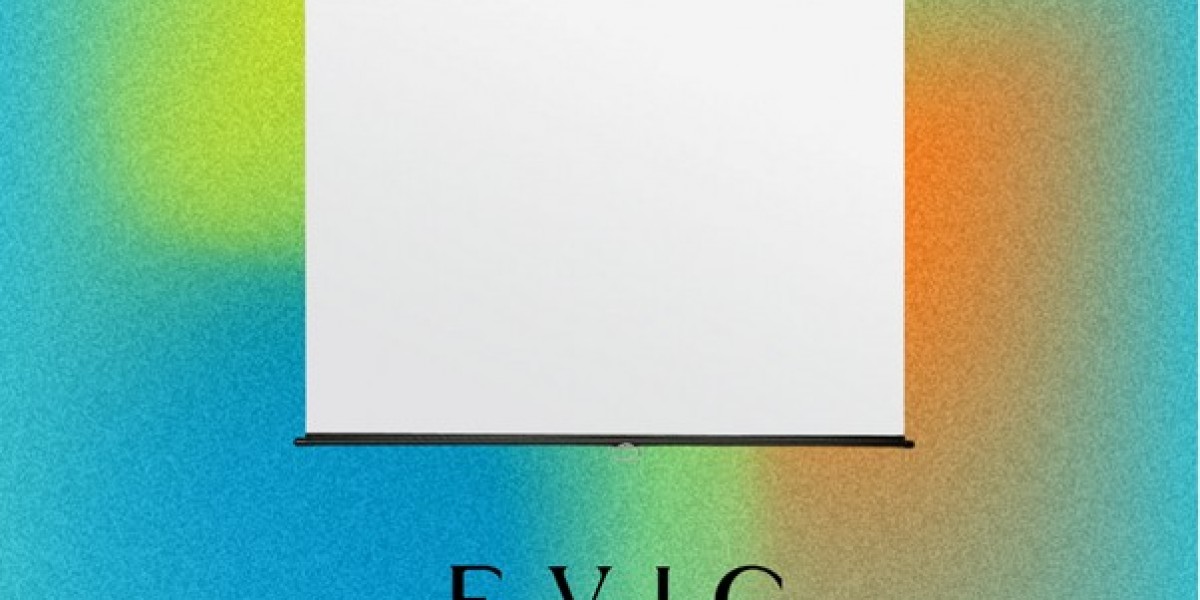Hospitals, clinics, and medical centers rely on clear communication every single day. Doctors explain results to patients, nurses attend training sessions, and hospital staff meet to review data.
For all of this, a good display system is important. Projection screens are becoming a top choice because they provide a large, bright picture without taking up valuable space on the wall.
How a Ceiling Projection Screen Works
A ceiling projection screen is built into the ceiling and stays hidden until it’s needed. With a simple press of a button or switch, the screen lowers smoothly for use. When finished, it rolls back into the ceiling case.
This design saves wall space and keeps the room looking tidy. This hidden setup makes a significant difference in healthcare settings, which frequently have limited space.
Benefits in Waiting Areas
Waiting rooms are often crowded, and patients spend time there before appointments. Instead of letting people sit in silence, hospitals can use screens to share useful information. The staff can display health tips, announcements, or calming videos to promote a positive environment.
Because the screen hides away when not needed, the waiting room doesn’t feel cluttered. Unlike bulky TVs that stick out, a ceiling screen blends in with the design of the room.
Training Rooms and Classrooms
Healthcare professionals go through constant training—everything from learning new medical procedures to practicing emergency drills. A ceiling screen is ideal in these situations.
The large, flat surface ensures that everyone in the room can see slides or videos clearly. When the training is over, the screen disappears, and the room can be used for other tasks. This flexibility is beneficial in hospitals with limited space.
Meeting and Conference Spaces
Hospitals are not just about patient care. They also conduct numerous meetings, including management discussions, staff briefings, and international video calls. A motorized ceiling screen helps these meetings run smoothly.
Staff can share graphs, charts, or medical images without worrying about visibility. The professional look also adds to the atmosphere, which is essential when outside partners or visiting doctors attend.
Comparing to Other Options
Some facilities still use fixed boards or televisions for presentations. While these tools are effective, they occupy permanent space. A ceiling projection screen is more flexible because it can be hidden when not in use.
Compared to a wall-mounted TV or static board, the ceiling option allows a room to serve multiple functions without compromise. In healthcare, where many teams share rooms, this flexibility is very valuable.
About Draper Screens
Draper is a trusted name in projection screens, having manufactured them since 1902. Their products are known for durability, smooth operation, and clear picture quality. One model that works well for healthcare facilities is the Access E.
It fits neatly into the ceiling, has a quiet motor, and comes in different screen surfaces. This variety allows hospitals to choose the right screen based on room lighting and use. Reliability is crucial in hospitals, and Draper’s extensive history instills confidence in its products.
Support from Evig in Dubai
Buying a screen is not just about the product—it’s also about the support behind it. That is why Evig, an audio visual technology solution provider in Dubai, plays an important role. As the official distributor for Draper in the region, Evig helps hospitals and clinics get genuine products, proper installation, and ongoing service.
This makes sure healthcare staff can focus on their work instead of worrying about faulty equipment. Having a local partner also means faster help if something goes wrong.
Maintenance and Care in Healthcare Settings
Screens in hospitals don’t need complicated upkeep. A quick dusting now and then, plus making sure the motor runs smoothly, is usually all it takes for places where the screen is used every day; calling in a technician once a year is enough to keep it reliable.
Why Screens Improve Patient Experience
Screens are not just helpful for staff—they make things easier for patients too. A short video can explain a treatment in plain words.
In waiting areas, calming images or simple health tips on the screen can ease stress and pass the time. These small touches go a long way in making the hospital feel more welcoming.
Final Thoughts
Healthcare facilities must make the best use of every room. A ceiling projection screen helps achieve this by saving space, keeping rooms neat, and offering large, clear displays for patients and staff alike.
Draper provides reliable options built to last, and with the support of Evig in Dubai, hospitals in the region can set up screens that are practical and easy to maintain. From waiting rooms to conference halls, these screens make a real difference in how healthcare facilities communicate and care for people.








